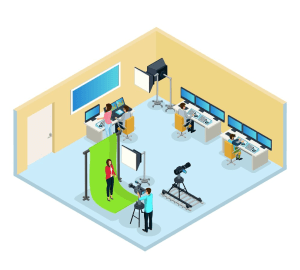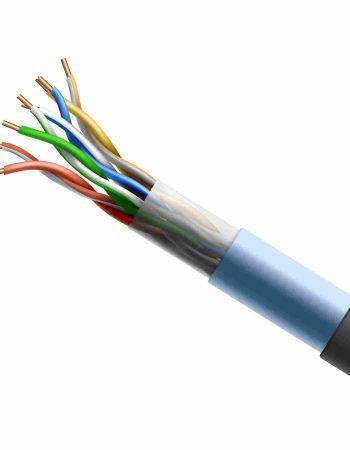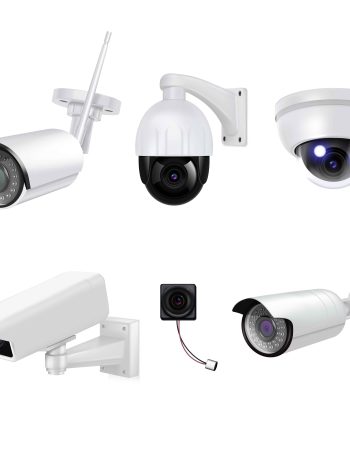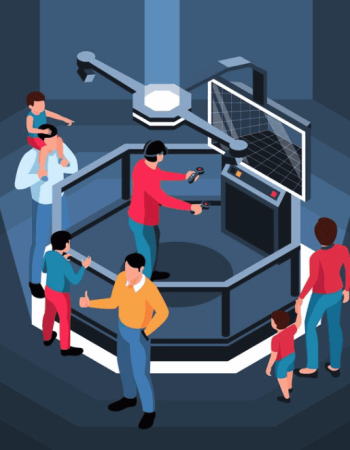The young generation of students demands a smart and up-to-date educational experience that satisfies their expectations and demands. Educational institutes and business organizations are turning to audio visual technology trends that are shaping the future of learning spaces.
Today learners are not just students or working professionals, they are digital minds who have grown up in a world of smartphones and tablets. They are more familiar with technology and connected with digital platforms than ever before, and they want their learning environments to keep up with their digital instruments.
In the modern educational environment, audiovisual technology plays a vital role in transforming an interactive learning environment. From traditional classrooms to online platforms, educators are allowing AV solutions to engage students, encourage collaboration, and improve learning outcomes. This blog will uncover four main audiovisual trends that are changing the whole learning space and transforming the way is imparted and absorbed. This content will also show the benefits of audiovisual technology in learning spaces and how it is redefining the modern education system.
Introduction to Audio Visual Installation
AV installation refers to the methodical process of designing, integrating, and configuring audio and video equipment in a facility. This also produces an engaging infrastructure that helps to manage multiple media inputs and outputs in the space. This installation contains various steps to set up the complete system, from performing a site survey to designing the AV system and installing as well as commissioning the system. The main components of an AV system involve loudspeakers, mixers to control sound, microphones, projectors, and a control system to switch inputs and operate the whole device. The audio visual installation has the ability to playback high-quality audio and video, recording options to document events, and professional lighting design to set the ambiance.
1. Virtual & Augmented Reality
Virtual and augmented reality have not touched some areas yet. As innovations like the metaverse continue to take shape, the VR and AR industries determine exponential growth. These technologies are transforming education by providing immersive and experiential learning opportunities. Applications transport students and workplace learners to a virtual environment where they can explore historical sites and live experiences. The installation process of VR and AR is generally started by assessing the specific needs and objectives of educational institutions by selecting suitable VR/AR hardware and software solutions.
Educators and IT staff take training to use VR/AR equipment as well as software to promote effective integration into curriculum delivery. Once the infrastructure is in place individuals can design and develop learning experiences and programs according to them. By following a systematic approach to this trend, institutes, and organizations can take advantage of the full potential of these technologies to improve activities and learning experiences that lead to success in a digitally-driven world.
2. Interactive Displays
One of the most difficult parts of effectively teaching in any space is holding the attention of individuals and many spaces are now incorporating interactive displays that help to do just that. Implementing interactive displays and smart boards in educational environments involves a systematic installation process to ensure seamless integration and optimal functionality. The installation typically begins with assessing the specific needs and objectives of the learning space, including factors such as room size, layout, and existing infrastructure.
Sustained technical assistance and upkeep guarantee that the interactive displays stay current and operational, optimizing their influence on education. Educational institutions can successfully implement interactive displays and smart boards, turning traditional classrooms into dynamic and engaging learning environments, by following a structured cabling installation process and offering thorough training and support.
3. Projectors
Projectors are essential components of audio visual (AV) systems in classrooms because they give teachers flexible tools to improve instruction. It make it easier to display visual materials like interactive multimedia, movies, and presentations, which supports a variety of learning styles and strengthens lesson ideas.
It support collaborative learning activities by enabling students to share their work, interact with digital resources, and participate in group discussions. However, installation process begins with a needs assessment to determine the specific requirements and objectives of the learning space, including screen size, projection distance, ambient lighting conditions, and connectivity options. Educators and employees receive training on operating the projector system, including basic troubleshooting, input selection, source switching, and maintenance procedures.
4. Integrated audio systems
This plays a crucial role in improving personalized learning experiences within educational settings. It ensures that instructional content that includes presentations, lectures, and resources can be heard clearly by all individuals. By promoting two-way communication through wireless microphones, discussions, and group activities as well as learning opportunities on new things.
The installation process of audio systems involves a complete need to identify requirements such as room size, seating arrangements, and other objectives. Additionally, speakers and microphones are strategically placed in the whole space to ensure even distribution of sound and whole coverage. Individuals take training to take this audio system including microphones, procedures, and maintenance tasks. These services are provided to address any issues perform software updates and ensure long-term reliability as well as performance of the audio system.
Conclusion
In conclusion, the audio visual landscape of learning spaces is changing due to the rapid evolution of technology, offering both educators and students exciting new opportunities. By adopting essential trends like interactive displays, VR/AR integration, adaptable learning spaces, and integrated audio systems, teachers can turn conventional classrooms into vibrant centers of inquiry, creativity, and teamwork. Flexible learning environments encourage active engagement and individualized learning experiences by adjusting to the needs of contemporary learners.
All students benefit from the improved communication, accessibility, and engagement that integrated audio systems provide. They also create a friendly and inclusive learning environment. In the end, the setting up of audio visual technology has a high potential to transform education and impact how people learn effectively and efficiently in the future.






